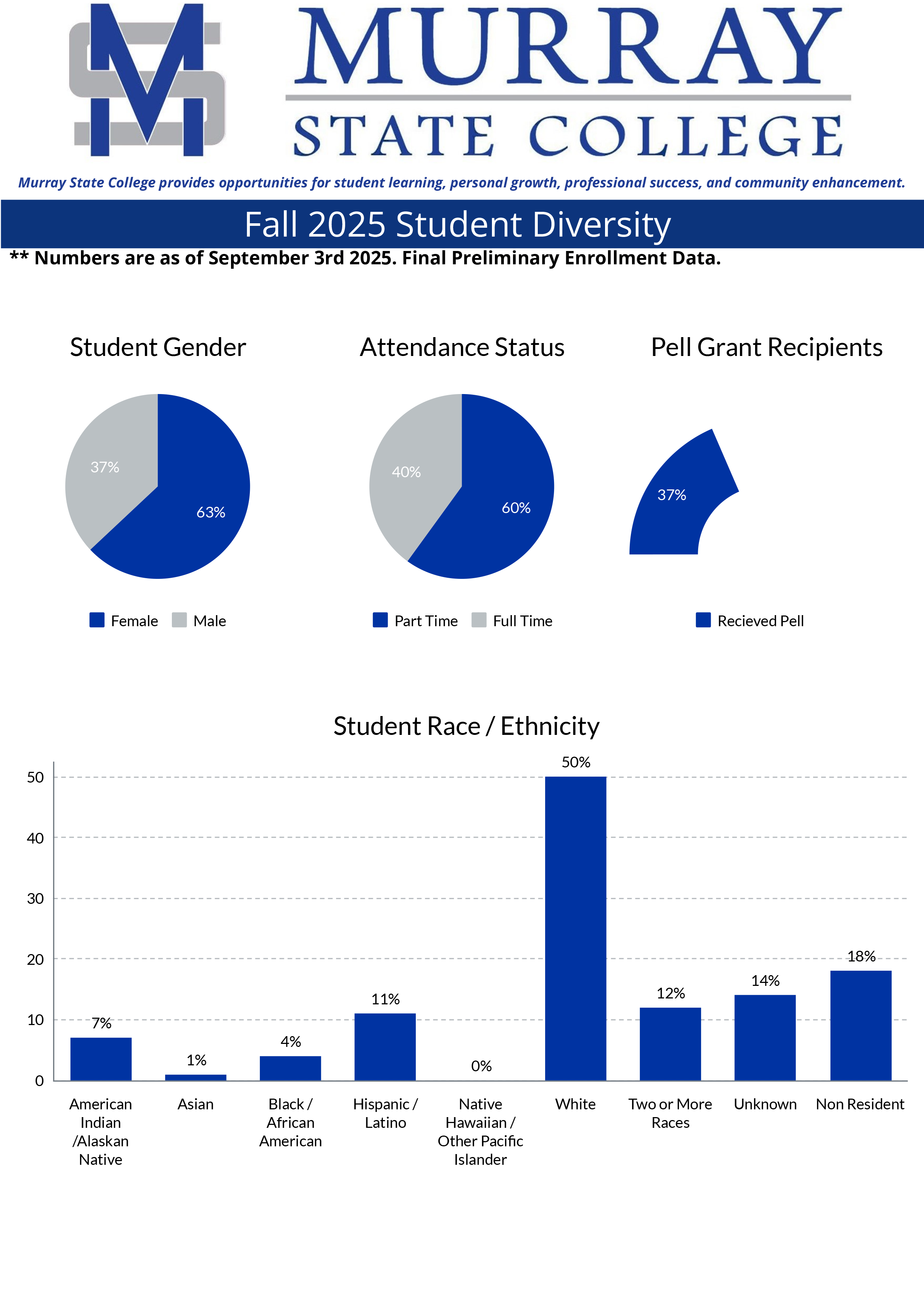INSTITUTIONAL RESEARCH
Institutional Effectiveness is responsible for UDS, IPEDS, HLC Accreditation, Institutional Research, Taskstream System Administration, External and Internal Data Requests, Faculty Research Requests and the IRB.
STUDENT OUTCOME DATA
Job Placement Rates for Graduates and Licensure Test Pass Rates:
Diversity of Enrollment
In the Fall of 2025 enrollment of all full-time undergraduates is 1,257. Of these 63% were female and 37% were male. 7% were American Indian/Alaska Native, 1% were Asian, 0% Native Hawaiian/Pacific Islander, 4% were Black African American, 11% were Hispanic/Latino, 50% were White, 12% were two or more races, and 14% were Unknown.

Mission: The General Education Task Force Provides Opportunities for Student Learning, Personal Growth, Professional Success, and Community Enhancement by creating a comprehensive General Education program that responds to the changing educational and intellectual realities of an increasingly global world.
More specifically, the Task Force:
-
defines the role of a new General Education program within the mission, vision, values, and goals of Murray State College.
-
takes a holistic view of the General Education Program, focusing on its underlying philosophy, intellectual purposes, and educational mission.
-
evaluates the General Education Goals and make suggestions for curricular, co-curricular changes in order to help meet course, program, and institutional goals.
-
evaluates assessment results as they apply to general education.
-
identifies measurements and assistant faculty and staff with measuring and reporting assessment of student learning in general education.
-
ensures the general education curriculum encompasses all seven of the institution’s General Education Goals.
Murray State College General Education Goals
-
Effective Communication - Murray State Colege provides students with the educational opportunities necessary to develop effective communication skills essential for daily interaction in society and the workplace.
-
Responsible Citizenship - Murray State Colege provides an educational environment in which students demonstrate an awareness of social and civic responsibilities.
-
Global Awareness - Murray State Colege provides students with educational opportunities to learn about cultural diversity and global awareness through curricular and extracurricular activities including lectures, music, literature, film, and art.
-
Critical Thinking - Murray State Colege provides educational opportunities in which students demonstrate problem-solving and critical thinking skills necessary for personal and professional success.
-
Quantitative Reasoning - Murray State Colege provides educational opportunities for students to collect and use quantitative data, create and examine quantitative models, apply mathematical skills and solve scientific problems.
-
Information & Technology Literacy - Murray State Colege provides students with educational opportunities necessary to demonstrate and apply information literacy skills and utilize technological resources necessary for personal and professional success.
-
Health and Wellness - Murray State Colege provides students with educational opportunities which will encourage self-management skills, foster a healthy lifestyle, and provide personal enrichment.
Mid-Level Assessment
Murray State College uses the ETS Proficiency Profile for Mid-level Assessment.
Graduates who have taken all of their general education courses at MSC are tested at end of their Sophomore year.
Results from ETS® Proficiency Profile
2019 Cohort Proficiency Summary
Summary of Proficiency Classifications
To show how many students are proficient at each level
Murray State College
Cohort Name: Murray State College - Spring 2023
Close Date: 07/07/2023
Student Level: All
Abbreviated Form
Test Description: Abbreviated Form B
Number of students tested: 41
Number of students included in these statistics: 41
| Skill Dimension | Proficiency Classification | ||
|---|---|---|---|
| Proficient | Marginal | Not Proficient | |
| Reading, Level 1 | 56% | 24% | 20% |
| Reading, Level 2 | 32% | 7% | 61% |
| Critical Thinking | 5% | 17% | 78% |
| Writing, Level 1 | 41% | 39% | 20% |
| Writing, Level 2 | 2% | 27% | 71% |
| Writing, Level 3 | 2% | 7% | 90% |
| Mathematics, Level 1 | 34% | 27% | 39% |
| Mathematics, Level 2 | 17% | 15% | 68% |
| Mathematics, Level 3 | 2% | 10% | 88% |

The skills measured by the ETS® Proficiency Profile test are grouped into proficiency levels - three proficiency levels for writing, three for mathematics, and three for the combined set of skills involved in reading and critical thinking. The table and graph show the number and percentage of students who are proficient, marginal, and not proficient at each proficiency level in reading and critical thinking, writing, and mathematics. A student classified as marginal is one whose test results do not provide enough evidence to classify the student either as proficient or as not proficient.

